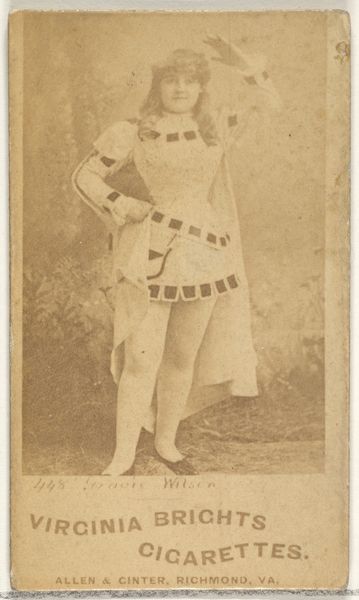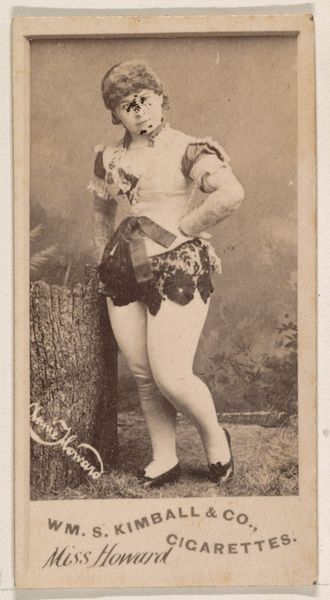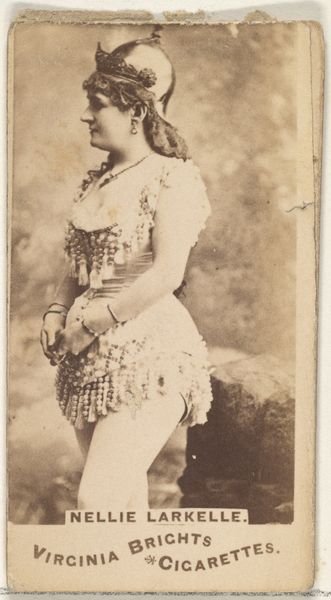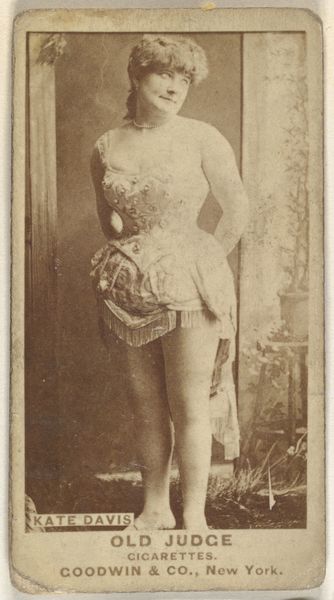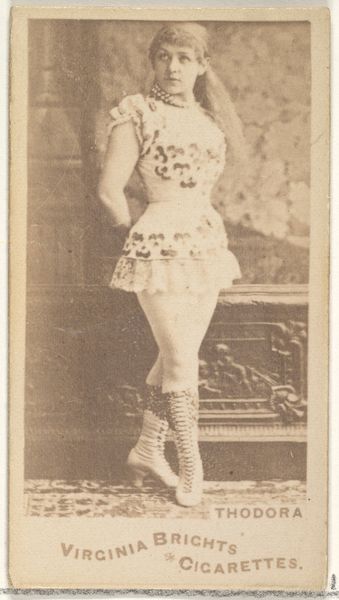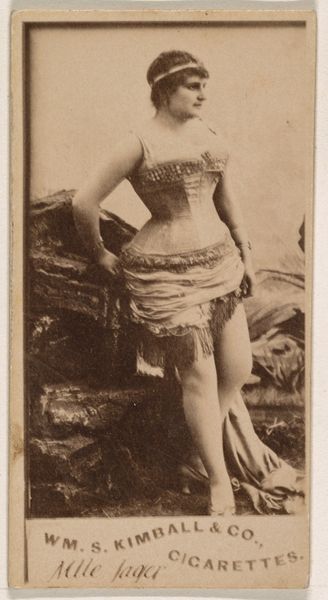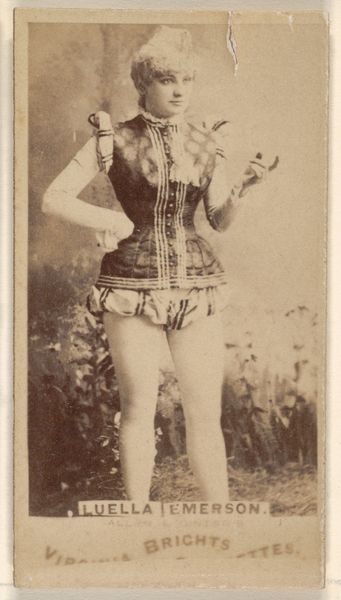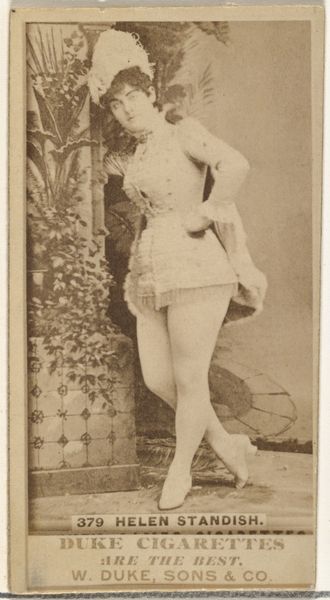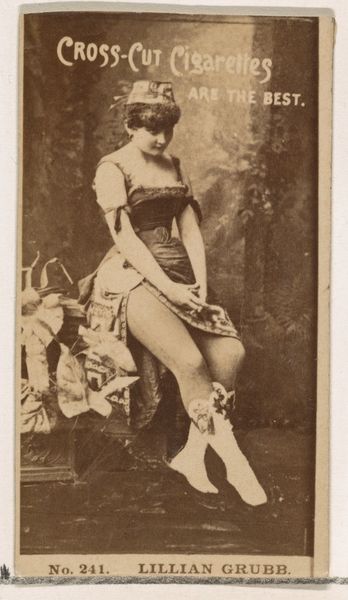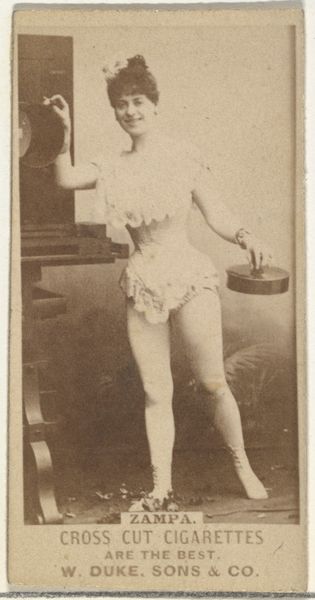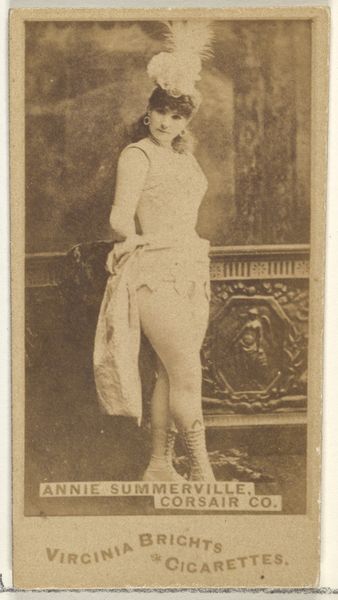
Grace Hurd, from the Actors and Actresses series (N45, Type 1) for Virginia Brights Cigarettes 1885 - 1891
0:00
0:00
drawing, print, photography, albumen-print
#
portrait
#
drawing
# print
#
photography
#
old-timey
#
coloured pencil
#
folk-art
#
19th century
#
albumen-print
Dimensions: Sheet: 2 3/4 x 1 3/8 in. (7 x 3.5 cm)
Copyright: Public Domain
Curator: This image has a sort of wistful charm. It's Grace Hurd, from a series called "Actors and Actresses" printed between 1885 and 1891. It was produced by Allen & Ginter for Virginia Brights Cigarettes, making it, essentially, a piece of marketing. Editor: It’s the quintessential sepia tone, isn't it? There's an inherent melancholy to these antique commercial prints, something to do with the staged quality, the direct gaze. I think about labor, exploitation, even though this attempts to promote "bright" sensations of life. Curator: You know, it is remarkable to think of this being distributed with cigarette packs. It’s more sophisticated than a modern trading card, though certainly serves a similar purpose. An albumen print, it has such a soft focus… Makes it feel rather dreamy and idyllic, don't you think? Like she’s caught mid-performance on a summer afternoon. Editor: It looks rather performative, but that's also what arrests me about the whole endeavor. Albumen printing was a bourgeois practice—meant to depict a sanitized reality. So there is always going to be a bit of historical fabrication built into its supposed dreaminess. Even how she places her hand upon her brow is an intentional move for that kind of fantasy-making. Curator: That’s so true. Everything from her elaborately decorated outfit to her rather serious, composed expression makes this a careful construction. Knowing this was used as part of an ad campaign allows one to speculate as to its reach into popular cultural consciousness. Imagine, a small rectangle holding the promise of…what? Status? Sophistication? A grand, theatrical life? Editor: The appeal lies in her potential visibility; it is fascinating how fame functions when attached to consumption. Allen & Ginter sought to commodify figures of public appeal, not merely for admiration, but for profit. The mass-produced image flattens Grace Hurd into a sign, emptied out for commercial engagement. How complex the actress is reduced to a tiny material sign of commerce, printed en masse with her hand shading her face. She, like her likeness, is a product. Curator: Such a lovely insight—almost melancholic. You really bring the world of commodification of female images in popular culture into stark view, reminding us about a long history of reducing people, including actresses to their "market value" or function as advertisement, as well as, the economic implications that frame all facets of culture and labor in relation to it. Thank you for expanding my vision of this old photograph! Editor: Absolutely! Thinking critically about historical conditions allows us to recontextualize these types of prints beyond aesthetic whims, and really question the terms of how people, even today, come to participate within systems that depend on structural inequalities. It can offer avenues toward social transformation if done well.
Comments
No comments
Be the first to comment and join the conversation on the ultimate creative platform.
